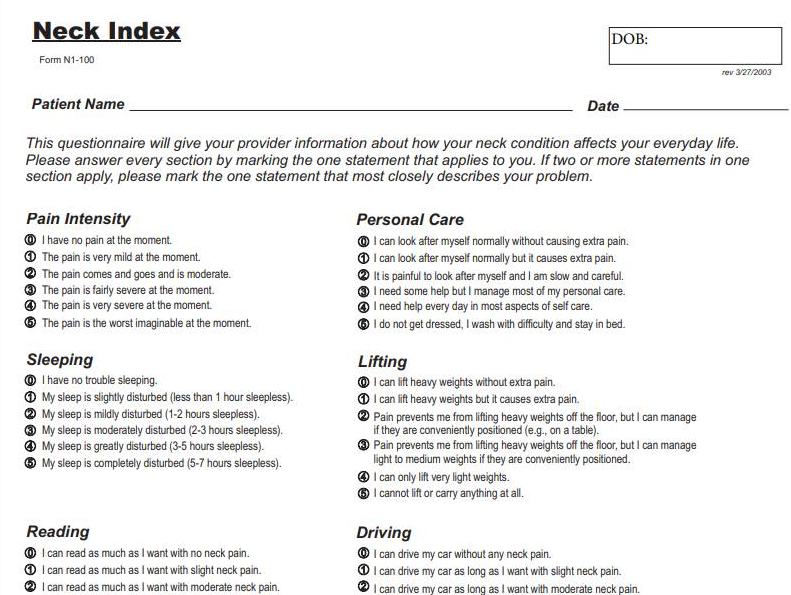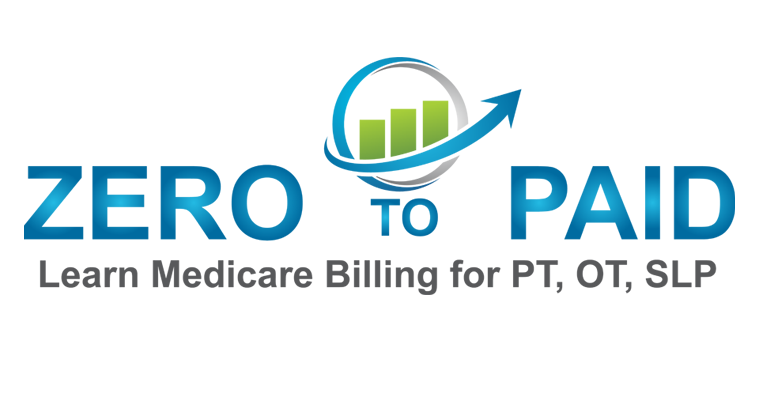Neck Disability Index – Functional Outcome Measure
CMS Medicare Benefit Policy Manual Chapter 15 specifies that PT, OT, SLP are required to use:
“Functional assessment scores (and comparisons to prior assessment
scores) from tests and measurements validated in the professional
literature that are appropriate for the condition/function being
measured” [1]

Neck Index Documentation Examples
Sleeping is a common functional activity limited by pain and decreased range of motion in the cervical spine.
Patients will often report “pain wakes me up after 2 hours”.
Looking at the Sleeping question, I would classify 2 hours or less of continuous sleep as a “4 – My sleep is greatly disturbed.”
I would then ask “When was the last time you were able to sleep comfortably throughout the night without neck pain?”
If my patient replies, “6 months ago” then I would know that the prior level of function was “0 – I have no trouble sleeping” and the goal level of function is “0 – I have no trouble sleeping.”
CGS LCD L34049
According to this LCD:
“Supportive Documentation Recommendations for therapeutic exercises
- Objective measurements of loss of strength and range of motion (with comparison to the uninvolved side) and effect on function
- If used for pain include pain rating, location of pain, effect of pain on function Specific exercises performed, purpose of exercises as related to function, instructions given, and/or assistance needed to perform exercises to demonstrate that the skills of a therapist were required
- When skilled cardiopulmonary monitoring is required, include documentation of pulse oximetry, heart rate, blood pressure, perceived exertion, etc.”
Developing Functional Goal Based Treatments
Based on your patient’s response to these questions, you can create very clear, objective goals for your therapy plan of care.
Once you have identified your functional goals including:
- prior level of function,
- current level of function,
- goal level of function
then it is time to create specific treatments for each of those stated goals.
For example a sleeping goal might be to return to uninterrupted sleep. A treatment plan for that might include:
- 5-minute seated UBE to warm up the neck and shoulder region
- Pec stretch with cervical rotation stretch on each side for 60-seconds and 3 repetitions.
- End range cervical rotation with isometric cervical muscle activitation 5-second holds for 10 repetitions.
- Standing cable high row 2 x 8
- Standing straight arm pulldown 2 x 8
- Self cervical traction in supine with a strap x3 minutes
- Self massage to cervical spine musculature x2 minutes with tennis ball peanut
- Patient education on sleep hygiene x 7 minutes.

